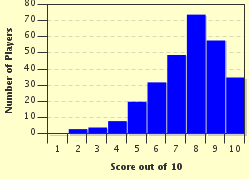Quiz Answer Key and Fun Facts
1. The creatures pictured are at the larval stage of development. Into which of these will they change as they mature?
2. These delightful babies belong to a sub-species native to America which came close to extinction in the 1980s. Their European cousins have no such problems and have been used to hunt rabbits. What are they?
3. These grey feathered youngsters will grow into which bird?
4. These very young puppies have not yet developed the distinctive attributes of their parents. What breed are they?
5. These caterpillars will grow up to be which commanding species of butterfly?
6. These cute little pups live in family groups of twenty or more individuals in Africa. What are they?
7. You'd have to be quick to catch an adult of this species, but this youngster might be a bit slower. Which big cat is it?
8. You might need to click on the photo to get a better view of this fledgling, summoning up the courage for its first flight. One of Britain's smaller birds, a member of the Paridae family, and with a common name reflecting its colouring, it's which of these options?
9. To which breed of cat, one of the most vocal, do the kittens in the photograph belong?
10. These might look rather like golf balls lying in a bunker, but are actually the eggs, dug up from the sand where they were laid, of which creature?
Source: Author
rossian
This quiz was reviewed by FunTrivia editor
Tizzabelle before going online.
Any errors found in FunTrivia content are routinely corrected through our feedback system.


